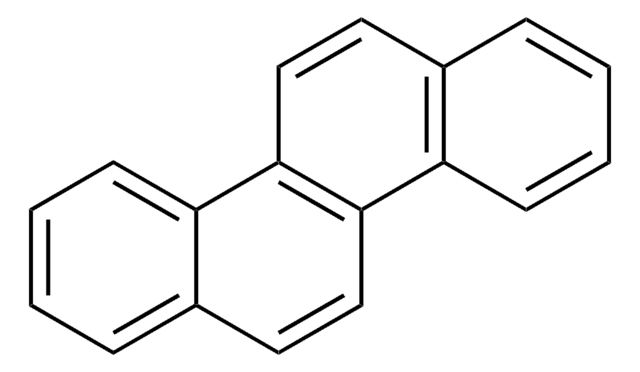BCR140
Benzo[c]chrysene
BCR®, certified reference material
About This Item
Productos recomendados
grado
certified reference material
Agency
BCR®
fabricante / nombre comercial
JRC
técnicas
HPLC: suitable
gas chromatography (GC): suitable
formato
neat
temp. de almacenamiento
2-8°C
cadena SMILES
c1ccc2c(c1)ccc3c2ccc4ccc5ccccc5c34
InChI
1S/C22H14/c1-3-7-18-15(5-1)11-14-21-20(18)13-12-17-10-9-16-6-2-4-8-19(16)22(17)21/h1-14H
Clave InChI
YZWGEMSQAMDWEM-UHFFFAOYSA-N
Nota de análisis
BCR140
Información legal
Código de clase de almacenamiento
11 - Combustible Solids
Clase de riesgo para el agua (WGK)
WGK 3
Elija entre una de las versiones más recientes:
Certificados de análisis (COA)
Lo sentimos, en este momento no disponemos de COAs para este producto en línea.
Si necesita más asistencia, póngase en contacto con Atención al cliente
¿Ya tiene este producto?
Encuentre la documentación para los productos que ha comprado recientemente en la Biblioteca de documentos.
Nuestro equipo de científicos tiene experiencia en todas las áreas de investigación: Ciencias de la vida, Ciencia de los materiales, Síntesis química, Cromatografía, Analítica y muchas otras.
Póngase en contacto con el Servicio técnico